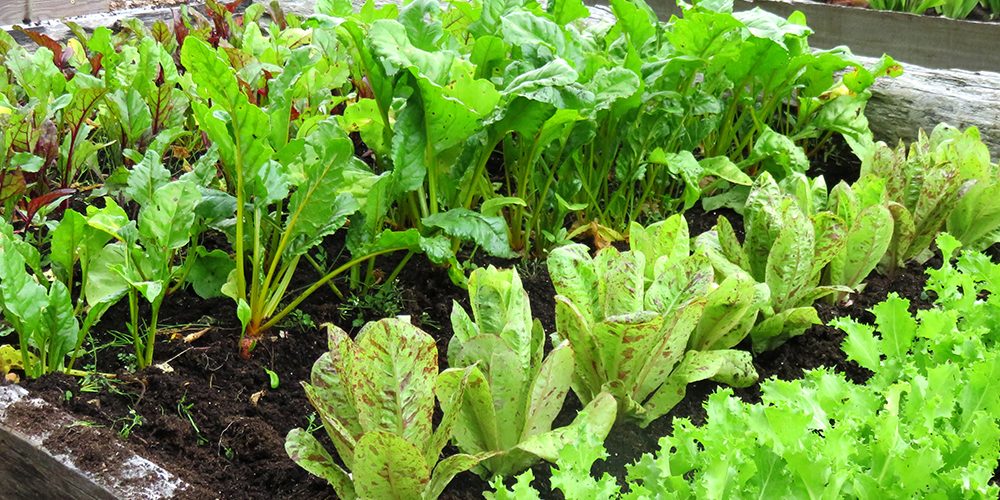Ordered too many plants for your plot? Do not worry… there are some very nifty tricks for squeezing it all in. This article looks at a few different ways of maximising space – useful for plots of any size!
Intercropping:
Intercropping vegetables is the clever practice of growing two or more different veg plants in close proximity to each other in order to make the most of the space you have. You can do this in two ways. You either place a slow growing plant right next to a fast growing plant or you grow a tall, leggy plant alongside a smaller, bushier plant allowing the sunlight to reach them both.
As a general rule, fast growing leafy veg (lettuces, rocket, spinach, chard etc) are really great for intercropping as you can pop them between any slow growers (carrots, brassicas, beetroot, sweetcorn, beans) and they’ll still flourish.
Here are a few more examples:
Sweetcorn and lettuce – the sweetcorn grows tall and slowly, whilst the lettuce grows quickly between the sweetcorn plants.
Tomatoes and basil – tomatoes provide a little shade for the basil, preventing the basil from bolting.
Squash, beans and sweetcorn – see above!
Broccoli and spinach – broccoli is a slow grower and spinach is a fast grower, so these work well together.
Cabbages and carrots – carrots take up little space above ground so are easy to plant in between cabbages.
Onions and cabbages – the onions will grow before the cabbages get too big.
Vertical Growing
Vertical gardening been quite a trendy topic over the last few years, and if you nip onto Pinterest and do a quick search you’ll see hundreds of fab pictures for inspiration. You can get really creative with how you build your vertical veg patch, there are absolutely no rules. We’ve seen loads of ideas, from upcycled pallets leaning against a back wall to cleverly arranged old drainpipes and even the odd hanging shoe rack here and there.
At the most basic level, you can easily pop a trellis up against a wall with a deep window box in front of them, and train plants vertically- this would work for climbing beans, trailing squash, peas, tomatoes, cucumber
Use flower beds
You don’t have to put all your veggies in a dedicated veg plot – if you have space in flower beds and borders, then there’s no harm popping some plants in there too. Kale, chard and cabbages can all look great dotted in amongst flowers!
Don’t exclude shaded areas of the plot
You can actually grow a fair few veggies in areas that get some shade during the day, particularly salad leaves, spinach, and brassicas. If you have some space in a part of the garden that is a little shady, buy a few pots or growbags and go for it!
Plug the gaps
You will inevitably lose some plants to slugs/pests/diseases – if you have spare plug plants after you’ve done your main planting, just temporarily plant them in a bag of compost, and if you have any lost plants you can pop them in their place!

